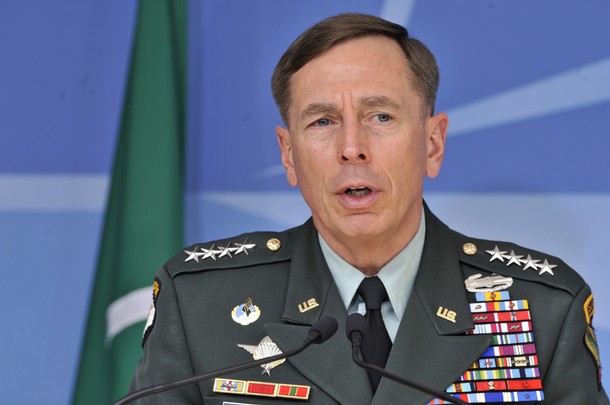
From Gen. Petraeus, NATO: It is important periodically for all of our populations to recall that the Coalition went into Afghanistan in late 2001 because the 9/11 attacks were planned in Southern Afghanistan, the initial training of the attackers was carried out in training camps in Afghanistan by Al Qaeda before they moved on to Western Europe and then ultimately to US flight schools to carry out their terrible attacks. Many of the other nations represented by Ambassadors around the table this morning have also suffered attacks that were originally planned or linked to Al Qaeda or other trans-national extremist elements that are still resident in that rugged border region of Pakistan and Afghanistan. And therefore there is a very important – as President Obama has put it – a vital national security interest in ensuring that these organisations not be allowed to re-establish a sanctuary or safe-haven in Afghanistan and that they be pursued wherever it is that they are located. …
when you take away the enemies safe havens and sanctuaries, particularly ones that are as important as say those in central-Helmand province and in Marjah, Nawa, Nad-e-Ali, even Lashkar, when you take away his safe havens, the enemy fights back. You may recall that in Iraq, the highest level of violence ever recorded in Iraq were months into the surge. They were very, very high at the beginning of the surge, but they actually went up. Vastly, by the way, multiples of times higher than we see in Afghanistan, although I do not in anyway way want to diminish – needless to say – the levels of violence there, and they have indeed gone up in part because when we take away what the enemy values, the enemy fights back.
Now there are tough casualties and there have been tough casualties as I predicted it last fall in testimonies in the United States and again earlier this Spring: the going gets tougher. It gets harder before it gets easier in the conduct of a counter-insurgency operation. But again I can walk you around the map and show you locations beyond just central-Helmand province, also areas elsewhere in Regional Command South and Regional Command Southwest, in Regional Command North and in the East as well as in the Centre, in Kabul itself, where I think there are areas that reflect improvement, and reflect reversing the momentum that the Taliban enjoyed before the onset of this particular fighting season. …
Where we will be looking for progress is in the expansion of security and this will probably be more of a sub-district or district level of progress rather than say an entire province, given the size of some of the provinces and the challenges that some of the provinces face.
We will be looking at the performance of the Afghan National Security Forces at their growth, not just in terms of numbers but also in terms of quality and their contribution in the fighting and where they are in the lead. …
And then there are those areas where there has been a sufficient foundation of security established. We will be looking for the complimentary activities in term of Afghan governance being re-established or strengthened and improvements in the provision of basic security services to the people and also looking for two very important qualities in all of this. And those are inclusivity and transparency.
Excerpts from press conference by NATO Secretary General Anders Fogh Rasmussen and the incoming Commander of the NATO-led International Security Assistance Force (ISAF), General David Petraeus. (photo: Getty)
Image: getty%207%202%2010%20David%20Petraeus%20NATO.jpg
